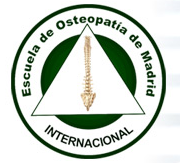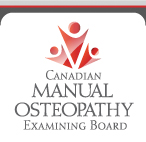by Caroline Markolin, Ph.D.
As summer is on our door steps, so is for many of us ”allergy season“. I often asked myself: Why do some people get hay fever and others don’t? What factors determine whether we are allergic to certain pollen or to other agents such as animal hair, certain food substances, metals, feather pillows, mold, or cigarette smoke?
Over the last few decades, medical science has come up with numerous theories about what causes an allergic reaction. One of the most popular views is that we develop an allergy when our organism is exposed to an offending substance at a time when our defense system is weak. But why does one person react with a runny nose, another with asthma and yet another with a skin rash?
Dr. med. Ryke Geerd Hamer, internist, medical researcher and originator of German New Medicine, explains the entire allergic process as a biological interplay between psyche, brain and the corresponding organ. In 1981 Dr. Hamer discovered that every disease starts with a shock experience that catches us completely off guard. He called this unexpected conflict a DHS (Dirk Hamer Syndrome), in honor of his son Dirk whose tragic death initiated Dr. Hamer's own cancer. Such an unanticipated event doesn’t necessarily have to be spectacular. It can simply be triggered by unanticipated anger or when somebody strikes us with an offending remark. Dr. Hamer found that at the moment we experience a DHS, the conflict shock impacts a specific area in the brain causing a lesion that can be clearly identified on a brain scan as a set of sharp target rings. The response on the organ is determined by which part of the brain received the conflict shock.
According to German New Medicine, every so-called disease has two phases. During the first, conflict-active phase, we feel mentally stressed, have cold extremities, little appetite, and suffer from sleep disturbances. If we resolve the conflict we enter the resolution or healing phase. Thus is the period in which the psyche, the brain and the corresponding organ undergo the phase of recovery, an often difficult process with fatigue, fever, inflammations, infections, and pain.
Symptoms that are typical for both the common cold and certain allergic reactions are nasal congestion, a runny nose and sneezing. The nasal mucous membrane is controlled by a brain relay in the frontal lobe of the cerebrum. By analyzing thousands of brain scans, Dr. Hamer established that it is exactly this particular brain area that is affected when we experience a ”This stinks!“-conflict, as he likes to call it. His findings confirm that a ”stink“-conflict can be experienced in real terms, for instance through a sudden offensive smell, or in a figurative sense. At the moment the conflict occurs, the nasal mucosa begins to ulcerate, a process that usually goes unnoticed. What is noticeable, however, are the typical signs of the conflict-active phase like shivers, a loss of appetite and a certain restlessness. But as soon as we resolve the conflict, often by leaving the environment or situation that ”stinks“, the ulceration in the nasal mucous membrane gets replenished. The refilling of the tissue loss causes nasal congestion and often headaches due to the brain edema in the affected brain area that also tries to heal. Sneezing and a runny nose are therefore signs that the organism is finally getting rid of the residue of the repair process and, figuratively speaking, of what caused the ”stink“ to begin with.
When we experience an unexpected conflict shock, our mind is in an acute awareness situ¬ation. Highly alert, our subconscious picks up all components that surround the conflict such as smells, tastes, sounds, objects, or people and stores them until the conflict is completely resolved. In German New Medicine, the imprints that remain in the aftermath of the DHS are called “tracks”.. These tracks are most significant because if a person is already in the healing phase and suddenly sets on a track through association or real contact, the entire conflict relapses and the Special Biological Program with all the symptoms that belong to the particular conflict starts all over again. This is, in biological terms, an allergic reaction. So what is commonly called an allergy is in fact already the healing phase after the conflict relapse. The biological purpose of the allergy is to serve as a warning system that says: ”In such a situation, you’ve had a DHS. Watch out!“
If somebody is allergic to a certain food like peanuts, eggs, strawberries or chocolate, the food substance was most likely consumed at the moment of the conflict shock. Now we have to be clear: When we leave the irritating substance out of the diet, it is NOT the avoidance of the food that cures the allergy, but rather the avoidance of the track! If a person reacts to a certain pollen with a runny nose, we can conclude that the pollen in question was present when a ”This stinks!“ conflict took place. As long as the conflict is not completely resolved the specific pollen will serve as a track and the ”seasonal allergy“ will recur year after year.
Tracks always have to be taken into consideration when we are dealing with ”chronic“ disorders such as arthritis, angina pectoris, asthma, hemorrhoids, or recurring infections. According to German New Medicine, the term ”chronic“ indicates that we have fallen back into the same conflict again and again. In order to interrupt the continual relapse cycle and be able to complete the healing phase once and for all, we have to identify the track(s) that were laid together with the original conflict shock. Clues for the cause of the allergy are usually hidden in the ”context“ of the allergic reaction. All circumstances such as time, place and the specific symptoms have to be carefully scrutinized. For instance, if a person suffers from migraines only on weekends, we will most likely find the source at the workplace. While nothing will be noticed during the week, on the time off, away from the ”culprit“, the organism takes the first chance to heal. By integrating German New Medicine into our daily lives we learn with growing gratitude the language in which Mother Nature speaks to us.
Extract from: www.LearningGNM.com
German New Medicine
Go to Content










 Master PCMH Criteria with Upcoming Webinars
Master PCMH Criteria with Upcoming Webinars







 The American Osteopathic Association (AOA) is the representative organization for the over 70,000 osteopathic physicians (DOs) and 18,000 osteopathic medical students in the United States. The organization promotes public health, encourages scientific research, serves as the primary certifying body...
The American Osteopathic Association (AOA) is the representative organization for the over 70,000 osteopathic physicians (DOs) and 18,000 osteopathic medical students in the United States. The organization promotes public health, encourages scientific research, serves as the primary certifying body...










 9:50
9:50
 Daniel Enriquez de Guevara
Daniel Enriquez de Guevara














.jpg)


















0 comentarios:
Publicar un comentario